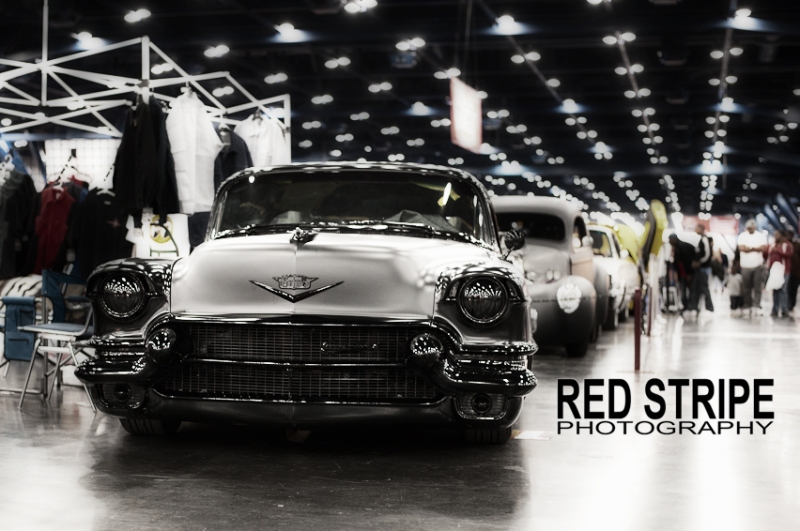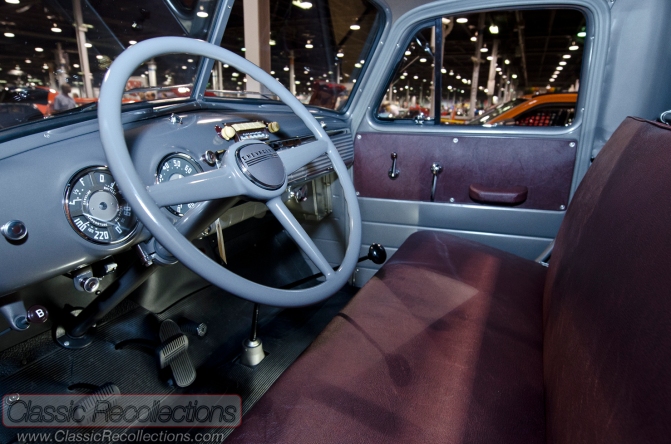Follow the link below:
Enter to Win a Shelby Cobra – Win With A Cobra.

POTD – Steven King’s Christine.
http://redstripeadventure.wordpress.com/2012/11/29/potd-steven-kings-christine/

Additional update:
According to The Standard Catalog of American Motors 1902-1987, the AMC V8 was introduced on March 5 (1956) in a new model called the Hornet Special. It displaced 250 cu. in. The 2 V8 engines were sold side-by-side until October 25, when the 1957 models were introduced. The 1957 cars, all of which were called "Hornets", came _only_ with the 327 cu. in. AMC V8 (the Hudson and Nash 6 cylinder engines were no longer available). *************** There may also be other replies, but you will not receive any more notifications until you visit the forum again. All the best, AACA Forums
From over on Antique Automobile Club of America.
http://forums.aaca.org/f169/engine-line-up-1956-hudson-part-340657.html#post1104154
Kevin wrote:
Quote Originally Posted by misterc9 View Post
AMC bought V8 engines and automatic transmissions from Packard. They installed them in Nash and Hudson cars in 55 and 56. Their own AMC V8 was ready for 57 so I think they only used their own engines from 57 on.
Kevin

56 Hornet
Thanks Kevin.
Tim
I need to finish this one up so here are the V8 offerings for the 1956 Hudson.
Interesting enough one was called the Packard Eight and the other was the Hornet Special Eight.
The Hornet Special Eight was a V8 with overhead valves. It was a cast iron block that displaced 250 cubic inches. The bore and stroke were 3.50″ x 3.25″ and a compression ratio of 8.0:1 helped produce about 190 hp. This was topped by a Carter WGD two barrel carb (Model 235S).
The Packard Eight, was it the really a Packard engine?
What I do know is that the Hudson engine was a V8 with overhead valves and cast iron block. It sported a bore and stroke of 4″ x 3.50 (which means the bore was half an inch larger than the Special and the stroke was quarter of an inch larger. This upped the compression ratio to 9.5:1 and displacement up to 352 cid. Topped with a Carter carb WGD two barrel (Model 2231SA it produced 220 hp.
But was it a Packard engine?
It may have been. In 1955 Packard powered some of its models with what they called the Clipper Custom or the Packard Line V8 (up until that date any Packard 8 cylinder was an L head). This engine had the same bore and stroke, compression and displacement (352). It had more horse power but that was more likely attributed to the 4 barrel Carter carbs that were used (models 2232S or 2284S). Packard also used Rochester Type 4GC four barrel carbs on some of the models. So I can’t conclude for certain that it was the same engine, but I believe it was. I’ll see if I can find the answer with more research.

56 Hornet
Thanks for reading.
Tim
MCACN: 1952 Chevrolet 3600 Pickup Truck.

To seem more follow the link above to Classic Recollections.
I love the painted dash on this 52 pickup.
Thanks for reading.
Tim
Next up we have Hornet Six and the Hornet Twin-H Six.
The Hornet Six was a cast iron power plant and displaced 308 CID. Like all the Hudson 6 cylinders this was an in-line L-head. This had 3 – 13/16 bore and 4.50″ stroke and a compression ratio of 7.5:1 and with a two barrel Carter carb (WDG Model 2252S) it would be the Hornet down the street with 165 hp.

Here a commercial image of the Cater WGD carb.
The Hornet Twin-H Six is basically the same engine, same displacement, bore and stroke, but this was topped with 2 WA-1 Carters (Model 2113S) one barrel carbs. This set up helped it reached 175 hp.

1956 Hornet

Twin-H 308 CID Straight Six
Thanks for reading. The V8’s are coming up!!
Tim
BRIGHT HOT ROD RUN 2012 SATURDAY.

I reblog this site all the time. Love the photography!!
http://crcooperphotography.wordpress.com/2012/11/18/bright-hot-rod-run-2012-saturday/
Tim
Think there was much of a choice of engines back in 1956? Well there were a few for the 1956 Hudson.
As was custom back in the 40’s and 50’s, the engines were often named similar to the model of the car they powered. For the 1956 Hudson, the company had the Hudson Rambler, Wasps and Hornet. The engines followed suit for the most part. There were 5 six cylinder versions and 2 V8s.
The first up is the Hudson Rambler Six. This was an in line 6 L head with a displacement of 195.6 cid. It was a cast iron block with bore of 3 1/8″ and stroke of 4.25″
and a compression ratio of 7.5: 1. The four main bearings, solid valve lifters and 1 barrel Carter Carb (YF model 2009s) combined to produce 120 horse power.

’56 Hudson Rambler In Line Six
The Wasp Six was a In Line L-head 6 cylinder. It to was a cast iron block same compression ratio 7.5:1. Its bore and store was larger than the Hudson Rambler – 3.00 x 4.75 (vs. 4.25) and it manged to displace 202 cid without a change in hp still at 120. The engine came from the factory with a Carter one barrel WA-1 carb (2009s).
The Wasp Twin-H Six was similar to the other Wasp except it managed 8.0:1 compression ratio with the help of the H carb configuration. This consisted of 2 Carter single barrel carbs (WA-1 model 2013s) that helped the 202 cid engine produce 130 hp.

1956 Hudson’s Wasp Twin-H In Line Six
(from: http://justacarguy.blogspot.com/2011/10/better-than-twin-h-power-this-hudson.html)
Coming up The two Hornet 6 cylinders, the Hornet Six and the Hornet Twin-H Six.
Thanks for reading
Tim

The First Iron Invasion Heats Up The Cold North.
http://www.rodauthority.com

Just about anyone can put together a car show; just throw a few flyers in car windows and tell people where to be. You are bound to have a couple cars show up. However, it takes a whole lot more than that to create an extravaganza that everyone from around the country hears about and is willing to cruise cross-country to attend.
Read more at www.hotrodauthority.com
Tim
Call me crazy, but I love these cars. I have only seen one in running condition and it was well restored. I’d love to own one.
The Jensen Interceptor debuted in 1966, but not originally – that was back in 1950 (I’ll cover those in a separate post.). These hand-built in Kelvin Way Factory, West Bromwich in the England from 1966 – 1976. The body style designed by Carrozzeria Touring of Italy and changed from fiber glass bodies to steel.

1966 Jensen Interceptor

1967 Interceptor
So what was this car made of? Let’s take a look.
Engines:
These cars were by….wait for it…………………..Mother MOPAR!!!
Yup these cars sported a Chrysler V8. The Mks I – III used either the 6.3 or 7.2 liter engines.
The 1966 started with the 383 CID which continued through 1970 knocked out 335 hp. The 383 was nurtured in 1971 dropping down to 250 hp. So Jensen decided to use the 440. They offered to versions, one had a 4bbl Carter carb making about 305 hp. The second was topped with three 2 barrel Carters and pushed 330 hps out of the block – we know this engine as the 440 Six Pack – only 232 of these were produced.!!!
In 1972 the 440 suffered the same fate as the 383 – the Six Pack was no longer available and the 4 barrel was de-tuned to 280 hp and again in 1976 dropped to 255. Jensen continued to use the engines.
Transmission:
The Jensen team selected the Chrysler’s TorqueFlite 727 automatic (3 speed) and 4 speed manual.
The curb weight was between 3500 – 3600 hundred pounds (about the same as a 1969 Cuda).
Other features:
Electric windows
Reclining front seats
Wood rimmed steering wheel
Radio with twin speakers
Reversing lights
Electric clock
Power steering (after Sept ’68)
Jensen produced the Mk I, MK II and MK III from 1966-1974. They came in 2 door convertible, hatch back and coupe.

Jensen Interceptor ‘Vert
Power specs: 0-60 in 6.4 seconds and top speed 137 mph (oh…I’m betting it would do better than that).
From Wikipedia:
A convertible with powered soft top was introduced in 1974 mainly intended for the American market but also sold in Europe. 267 convertibles were made.[3]
Rarer still is the Coupé version with just 60 made,[3] derived from the convertible and therefore without the distinctive rear window of the regular car that was introduced in 1975, a year before the company’s demise.
Jensen were one of the first manufacturers to equip a production car with four-wheel drive, in the 1967 Jensen FF (Ferguson Formula). At the time it was hailed as a remarkable development, coming also with Dunlop Maxarat mechanical anti-lock brakes and traction control. The car is five inches (127 mm) longer than the Interceptor, and although looking virtually the same the extra length is identified by an additional side vent ahead of the doors on the front flanks, an extension to and additional swage line in the leading edge of the front wing (fender). Press articles from the time quote “drag-strip” performance when describing the car. In total 320 FFs were produced; 195 Mark I, 110 Mark II and 15 Mark III. [4]
A Jensen specialist based at Cropredy Bridge rebuilds original Interceptors using modern components.
In May 2010, Jensen International Automotive was set up, with the financial backing and know-how of Carphone Warehouse founder and chairman Charles Dunstone who joined its board of directors. A small number of Jensen Interceptor Ss, which had started production under a previous company, are being completed by Jensen International Automotive (JIA), in parallel with JIA’s own production of the new Jensen Interceptor R; deliveries of the latter have started (beginning of 2011) at the Oxfordshire-based manufacturer and restorer. Tony Banham is JIA’s Managing Director.

The New Interceptor? Jensen Interceptor XL concept!!
Thanks for reading.
Tim.